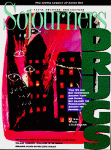Nuclear power plants in the former Soviet Union represent "40 Chernobyls Waiting to Happen," as a recent New York Times headline put it. Despite the well-documented design and construction flaws, poor training of workers, and shortages of funds, spare parts, and supplies, solving the problem in the immediate future seems next to impossible.
Closing the plants would deprive the former Soviet republics of a much-needed source of energy, and the economically strapped governments can't afford the multibillion-dollar repair bill that it would take to clean up the mess. So, for the forseeable future—lacking a massive foreign bailout—the world is stuck with these ticking nuclear time-bombs.
The nuclear industry in the United States has tried to convince the public that reactors in this country are far safer, but so far the public isn't buying it. According to an April phone survey commissioned by the Safe Energy Communication Council, two-thirds of the American public opposes the construction of new nuclear power plants.
A comprehensive SECC report documents that there is good reason to be concerned about reactor safety. The report details 787 potentially dangerous safety problems at the 111 U.S. nuclear power plants, and demonstrates that the situation is getting worse because of aging reactors, lax enforcement of safety rules, and poor management by utilities.
Despite the safety problems, the Nuclear Regulatory Commission and the nuclear industry are trying to convince Congress to relax the licensing process for future reactors by eliminating an operating-license hearing after a power plant is constructed. According to Martin Gelfand, research director for the SECC—a coalition of national energy, environmental, and public interest media groups—one-step licensing would "muzzle the public from addressing legitimate safety concerns that arise during plant construction."

Got something to say about what you're reading? We value your feedback!